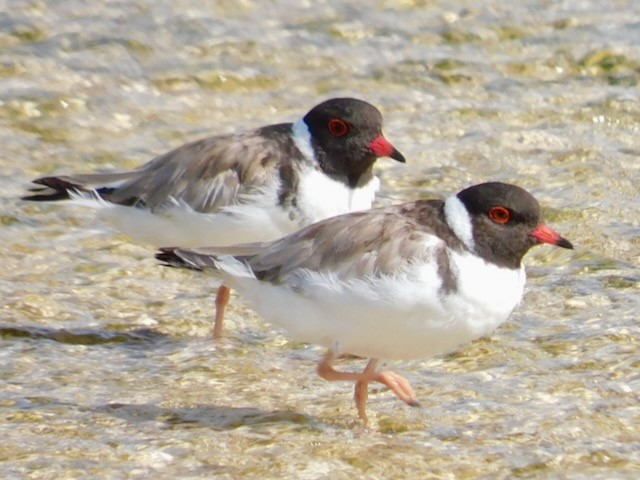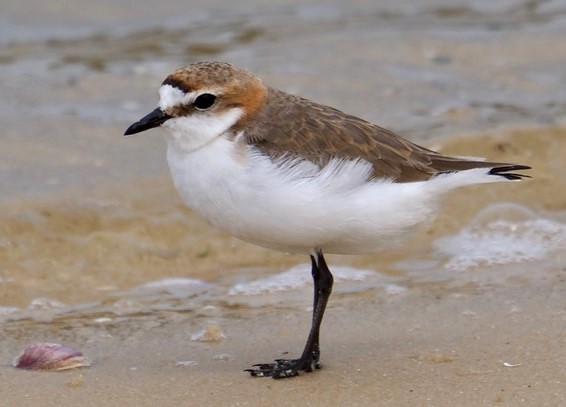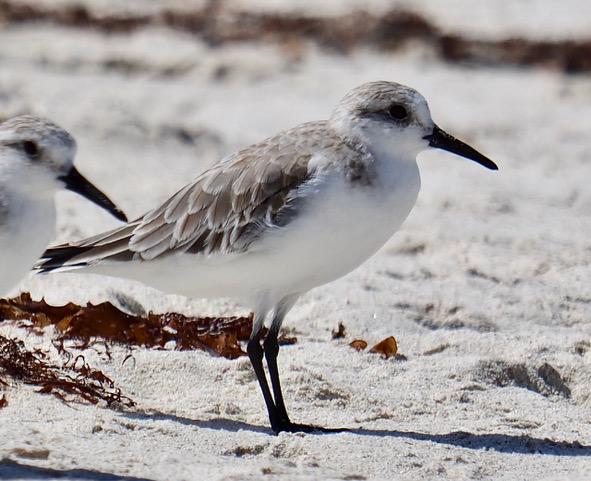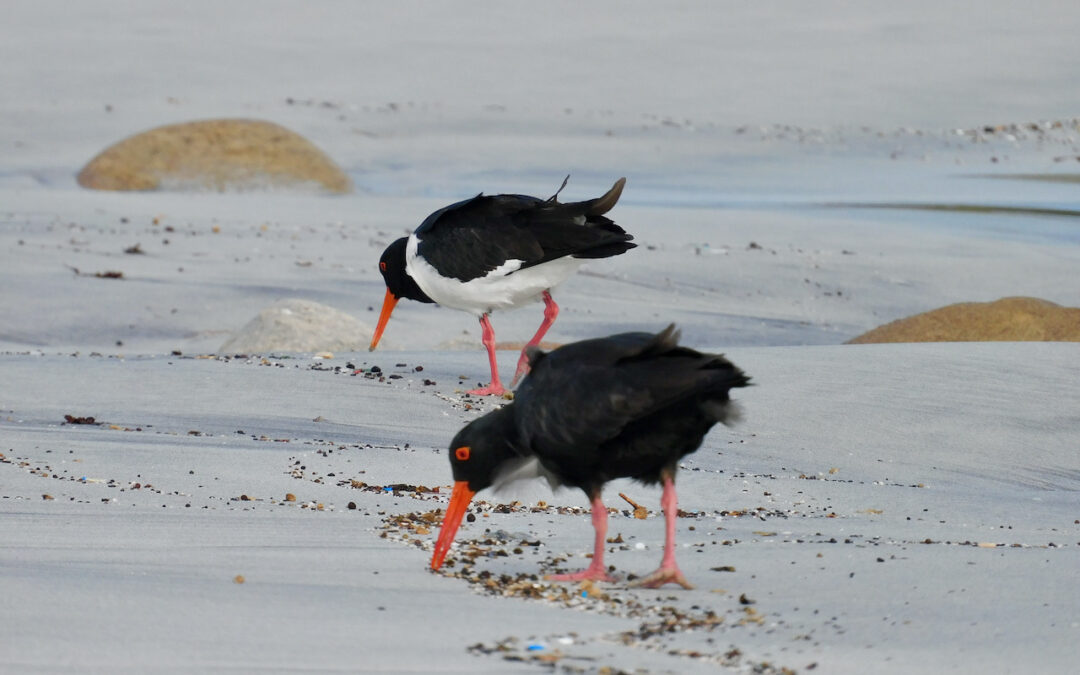Do you know an oyster catcher from an osprey or a kestrel from a Pacific gull? Nature Conservation Margaret River Region’s Caring for Coast program is putting the spotlight on our region’s special coastal bird species – and wants every local to be able to identify them.
While there has been much publicity about the endangered hooded plover, Caring for Coast program coordinator Mandy Polley says other shorebirds that we may see at the beach are “beautiful, fascinating, and worth knowing more about”.
“We really want locals to know more about these species, why they’re important to the ecosystem, and the simple things we can all do to help these birds survive and thrive,” Mandy says. “If you sit and watch shorebirds for a few minutes and learn more about their habits, you’ll undoubtedly be delighted by these animals.”
“For instance, sooty and pied oystercatchers are similar looking with long red bills. Sooties are all black and pieds are black and white. They both can use their long bill to stab at prey or to lever, prise or hammer open food items, including molluscs. Sooty oystercatchers even drink seawater! On our coastline you will often see these birds either alone or with a partner.”

Hooded plovers. Photo: Jenny Kikeros
Christine Wilder from BirdLife WA’s Cape to Cape Bird Group has spent 40 years volunteering to protect shorebirds and other species and is passionate about their conservation.
“Here in Australia around 54 species of shorebirds regularly occur. They are often referred to as waders and include both resident and migratory shorebirds,” Christine says. “In the capes, four resident species are known as beach-nesting birds – the Western Hooded Plover, Red-capped Plover, Pied Oystercatcher and Sooty Oystercatcher. I’ve been associated with the management of hoodies for more than two decades here, so that bird is very special, but the smaller Red-capped Plover is now gaining attention.”
She said a joint BirdLife WA and Department of Biodiversity, Conservation and Attractions program was shining a light on our beach nesting birds and their habits. Meanwhile, she said “migratory shorebirds are pretty special too – however in recent years their numbers have been dropping alarmingly due to conditions they face along their flyway, to and from the northern hemisphere, and also threats when spending summer here in Australia”.

Red-capped plover. Photo: Ken Glasson
While many of us like to take our dogs to the beach, Nature Conservation says dogs can have a big impact on shorebirds. “When uncontrolled dogs roam across a beach, their movements may cause birds such as hooded plovers to leave their nest. Dogs can also crush the eggs, while plover chicks are vulnerable because they can’t fly out of harm’s way for five weeks after hatching,” Mandy says.
“Our shorebirds are an important part of our coastal ecosystem, and to conserve them we need to do more than simply coexist with them. They face so many threats to their survival, including climate change, dogs, beachgoers and four-wheel driving. But we can protect them by only walking dogs at designated dog-exercise beaches, walking along the water’s edge, respecting fencing and signage during shorebird breeding season, and four-wheel driving below the high tide mark and at low tide.”
Nature Conservation’s Caring for Coast program is funded through the Line in the Sand philanthropic group, while the Shire of Augusta Margaret River’s Environmental Management Fund is helping to put the spotlight on coastal education.

Sanderling. Photo: Ken Glasson
MANDY’S OTHER FAVOURITE COASTAL BIRD SPECIES:
Terns
Terns are sociable birds and often flock in large groups. They feed by plunging into the ocean, hawking for insects over land and water, and by gleaning food while walking on the ground or in shallow water. There are several tern species seen along our capes coast, including Caspian Tern, Greater Crested Tern and Fairy Tern.
Sanderlings
Sanderlings are small, plump sandpipers. Sanderlings and other similar birds are often called “peeps”. They breed on the high Arctic tundra and tackle an incredible migration from the other side of the world to spend summers on beaches here, gathering in flocks to probe the sand for invertebrates.
Hooded Plovers
These birds often get a bad rap because they can be the cause for closing beaches to dogs. However, it’s not without good reason. Research shows they have abandoned some beaches where they once nested. Nests can fail, and of the eggs that hatch, many chicks perish. This is often due to predators like foxes, cats, gulls and birds of prey, plus trampling by people and vehicles. Their nests are simple scrapes in the sand, and the eggs are well camouflaged, so they’re easy to miss. Like any good parent, these birds will do anything to protect their babies. Behaviours include head bobbing and broken wing displays. Fluffy chicks often hide behind anything that may conceal them – seaweed, vegetation or depressions made by footprints or wheels.

